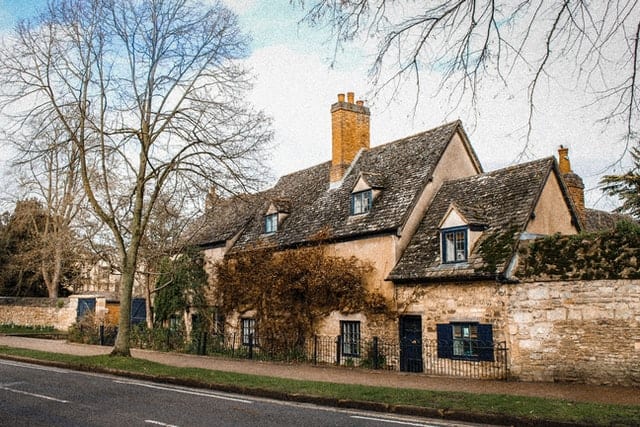
How to treat dry rot in timber
What Causes Dry Rot in Timber?
Timber rot is an issue that no homeowner will want to deal with, especially when it comes to dry rot. Dry rot is often the hardest issue to deal with when it comes to timber problems and decay since once a dry rot outbreak has begun eating away at the wood, it can be difficult to stop the spread. To make sure that the dry rot problem is completely removed from the home, it is often necessary to get expert knowledge and specialist treatment. In order to resolve a problem with dry rot, it is usually necessary to get a professional in to help you identify the causes of the dry rot and come up with the most appropriate treatments available and how to prevent future outbreaks of dry rot. Wood, which is the food source, along with moisture, both need to be present in a building in order for dry rot to occur.
What is Wet Rot and Dry Rot in Timber?
Wet rot and dry rot are both types of timber decay that can occur in a property and will need to be treated quickly in order to ensure that no further damage occurs. Dry rot is often more problematic and harder to deal with compared to wet rot, since it is harder to get it under control and prevent the spread of the rot which is caused by fungus that attach themselves to and feed on the wood. On the other hand, wet rot is most commonly caused by moisture that has gotten to the timber and in many cases can be reversed with the appropriate steps.
Drying out the wood with appropriate ventilation and keeping the room warm can reverse the effects of wet rot, and the wood can be treated with a hardening product that can restore the wood. However, as wet rot might occur behind walls or beneath the flooring, it has the potential to cause significant damage to the structure of the home since it may not always be caught early enough to treat.
What is Dry Rot in Timber?
Dry rot is caused by a fungus that can cause significant damage to the timber in your home once it enters the property. As with most issues that will affect the structural integrity of the property, early detection and prevention of dry rot is key to repairing the problem and reducing the risk of spreading.
Despite being named dry rot, this problem means that the affected area needs to first be moist in order for the fungus to become established. It was named dry rot in order to make it easier to differentiate between other types of rot that occur in wet wood such as timber that is newly felled. Fungal spores that usually appear as an orange dust will thrive in wood that has a moisture level of around 28-30%. In the right conditions, the fungus will germinate and produce hyphae, which are strands that eventually develop into a mycelium, or fungal body. Once the fungus has established itself in the wood, it only requires a moisture content of over 20% to survive and develop more hyphae that can travel over stone and brick to find more wood and spread throughout the home.
What Causes Dry Rot in Timber?
It is the colonisation of fungus in the wood that causes dry rot or brown rot decay. The Serpula lacrymans fungus is the most common cause of dry rot in UK homes. The decay occurs when the fungus feeds on the timber, taking cellulose, hemicellulose, and water from the wood which leaves a brittle and dry structure. The decay will often cause cracks in the wood that appear in a fine pattern of squares, leaving it a darker or browner colour and making it crumbly. Eventually, if left unchecked, dry rot will cause the wood to crumble into dust which could lead to parts of your home collapsing completely. However, dry rot does not affect any masonry since it does not feed on it but only travels through it to find more timber to feed on. It is important to note that dry rot could be present in the walls of your home for months or even years before you will notice the fungus appearing on the wall surfaces.
Dry rot can occur when the timber in your home has become dampened for any reason. There are two main reasons why this can occur, including moisture that has entered the timber in your home as the result of a leak or damp problem, or when your home is old and does not have timber in the structure that meets modern building standards. Today’s kiln-dried timber has an average moisture content of twenty percent and is compulsory for internal building and construction. In addition, older homes might have clay roof tiles that do not meet the current water permeability building regulation standards and therefore may be less effective at preventing water from outside the home from entering the timber.
Bear in mind that even if a leak or damp problem has since been solved, dry rot that colonised while your timber was damp might still be present. Any damp problem that can affect your house can pose a risk factor for dry rot including penetrating and rising damp issues. If you have dry rot but haven’t noticed a damp problem, this means that there is a damp problem somewhere in your home even if it has not been noticed yet.
How to Treat Dry Rot in Timber
To treat dry rot in timber, it’s important to make sure that any damp issues that have led to it in your home are first solved. Any dry rot treatments that you use will quickly become ineffective if the timber is able to get damp again since this will dilute the treatment you have applied and make it possible for the fungus to colonise again.
There are several things that you can do to treat and repair timber that has been affected by dry rot. If you have dry rot present in your property, use sensor sticks that are specially designed to find the source of the problem and understand how far the rot has spread in your home. If you are certain that the rot has only affected exposed woodwork in your home such as exposed joists or skirtings, you will need to ensure that the affected timber is treated in addition to any masonry that it may be in contact with. If the structure of the timber has been subject to severe damage by the rot, you will usually need to have it replaced, which you can do yourself or with the help of a building professional.
Once you have replaced the timber, bear in mind that the surrounding masonry and timber may have been entered by fungal strands, so it’s a good idea to treat these too even if there are no obvious signs of dry rot. Fungal strands that are small and have not yet had the chance to colonise can often be invisible to the naked eye.
Any visible signs of dry rot in the walls, or if sensor sticks indicate that there is dry rot present within the wall, will require you to strip the plaster off the wall and treat it before replastering.
Dry rot can pass through stone and brick in order to reach other timber structures in your home. Boron powder dissolved in water is the best product to use in order to treat and kill any fungus that is present in masonry in your home. You can brush the solution onto the affected area or spray it on depending on the size of the area and how you prefer to apply it.
How to Fix Dry Rot in Timber
There are a number of products available to fix dry rot in timber. These can be used in cases where the damage is not so severe that the timber will need to be removed and replaced in order to solve the problem. You can get products that are designed to coat the surface of the timber and products that will penetrate into the timber itself. Boron gel is a common solution for fixing dry rot in timber, and comes in different concentrations for whether you are looking to prevent or treat dry rot. It can easily be brushed onto the timber surface.
Boron rods are another option to consider. These are made from highly concentrated borate and inserted into the timber through holes that you will need to drill. You can also insert boron paste into holes that you drill into the timber. Borocol, which is a mixture of boron and glycol, can be used to treat timber that has been affected by dry rot, mould, and even insect infestations at the same time. If you are not sure how to treat dry rot effectively on your own, it’s always best to call an experienced professional.
When it takes hold, dry rot can be a serious problem in your home that can lead to severe problems with the timber and structure of the property.
FAQ:
Return to main independent damp surveyors page.

